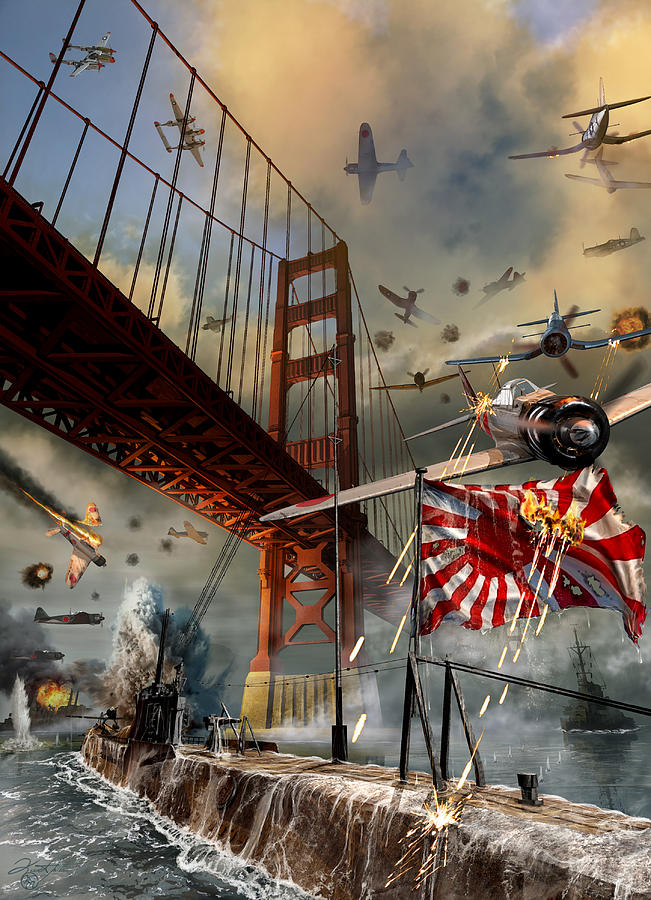You are using an out of date browser. It may not display this or other websites correctly.
You should upgrade or use an alternative browser.
You should upgrade or use an alternative browser.
Photos from The Man in the High Castle
- Thread starter Kotka
- Start date
Colorized photo of members of the Indian Legion being inspected. A lot of them were former POWs captured in North Africa, Middle East or even in England frontlines and join, either by political ideals or rather by in order to reach India as quickly as possible, the division was little used, not knowing its baptism of fire before 1944 in occupied russia.
US Army Green Beret conducts a live fire test with a captured German made FG-42 Falshimjager. Caption was unclear and some rumors confirms that this photo can came from a brutal combat between an unknown enemy force identified as part of the SS and a unit of green berets in the late 1960s somewhere in Colorado. Official sources had denied the existence of such a military engagement.
Minor nitpick: Estonia's population is mostly Finnic. Back in the 1940s, even Narva was barely one third Russian, and in cities like Tallinn/Reval, Tartu/Dorpat, and Parnu, Russians were virtually absent.After the invasion of Poland, Heinrich Himmler sought to expand the ranks of the Waffen SS with foreign military volunteers. In January 1941, the 5th Panzer SS Division Wiking was officially named, made up of Norwegian, Swedish, Danish, Dutch, Estonian and Flemish soldiers. Under the command of Felix Steiner, SS Division Wiking took part in Army Group South's invasion of the Ukraine during Operation Barbarossa.
In June 1941, the Finnish Volunteer Battalion would be created, becoming the division's third battalion. The SS Wiking Division would play a integral part in the seizure of the Caucasus oilfields in 1942, allowing the rest of the German Army to sweep down into the Middle East and meet up with the Afrika Korps.
Their primary motivation for joining was to take part in the Reich's 'crusade against Bolshevism'. However, when the war ended, the Germans would turn on their volunteers. For the Danes and Dutch, their countries were to be annexed into the Reich. For the Swedes, their government was eventually forced to concede large swathes of it's iron ore deposits to the Reich, with a 'peacekeeping force' kept in the country to make sure the shipments went unmolested. For the Flemish soldiers, who had previously joined the fascist Rexist Party, Flanders would be annexed into the Reich and it's Dutch-inspired culture gradually suppressed in favour of National Socialism. The Finns were able to hold out the longest. Carl Gustaf von Mannerheim was able to ward off German occupation of his country until the 27th of January 1951, when he died. After his passing, Finland was treated like any other tributary state and German forces invaded to maintain the corridor of ore from Sweden.
But Estonia got it the worst. As part of Generalplan Ost, Estonia was brutally depopulated and it's Slavic population either starved to death as part of Nazi hunger polciies or were pushed further east to make way for German settlers.
View attachment 549011
Finnish members of the SS Wiking Division
View attachment 549012
Norwegian members somewhere in Russia
View attachment 549013
Leon Degrelle, former leader of the Rexist Party in Belgium and SS-Standartenfuhrer
View attachment 549014
Danish volunteers parading in Berlin, 1941.
Minor nitpick: Estonia's population is mostly Finnic. Back in the 1940s, even Narva was barely one third Russian, and in cities like Tallinn/Reval, Tartu/Dorpat, and Parnu, Russians were virtually absent.
While this is true, it is also true that the Nazis did plan to practically eradicate the Estonians as a population group, by Germanizing a part of it and destroying the rest in some fashion (likely through slave labour, etc). For Nazi victory scenarios that include an independent Greater Finland, I often suggest a stock solution for the Finns to rescue at least a part of the Estonian people (say, something like a million or so, or more) from oblivion by offering to take them off the Nazis' hands, and then resettling them en masse to their newly-annexed Eastern Karelian territories, hereby creating an "Estonian homeland" of sorts somewhere along the Onega or the White Sea. While there would be humanitarian-cultural reasons for the Finns to do this, it would also make sense from a cynical economic POV: after the expulsion of the Russian population of Eastern Karelia, Greater Finland would be sorely in need of people to settle in its far-flung territories as farmers and workers...
The other nitpick that came to my mind when reading Nathan Bernacki's post was one of my little pet peeves, that of calling Mannerheim a "von". While the Mannerheim family is originally from Germany, they are Swedish nobility and have generally never used a "von" as a part of their name. Of course in a Nazi victory scenario the standard German style might be to call the Marshal of Finland "von Mannerheim" - but then that would be an in-universe style, not one that has been really traditionally or officially used IOTL.
Last edited:

The Imperial Japanese Navy base at Pearl Harbor, Hawaii. The site of the infamous December 7th, 1941 surprise attack became the springboard for the IJN for their invasion of the West Coast after retaking Hawaii in February 1942.

The streets of Havana, Cuba, an external territory of the American Reich and a popular tourist destination for Reich citizens.
German soldier in Occupied Greenland, 1958.
considered by theorists and other Nazi occultists as the cradle of an Aryan hyperborean civilization, the polar circle was massively colonized and explored by Germany (which annexed many Norwegian and Danish islands). the attachment of Greenland to the Reich as an SS state will not surprise anyone.

"Cowboy resistance" in occupied Texas, c. 1964. These cowboys are known to operate throughout the former Southwestern United States and is alleged supported by the Mexican resistance across the border.
Last edited:

Chinese New Year in Chinatown, San Francisco, JPS (c. 1953). In a move to win the hearts of the local Chinese population, the Japanese occupational government allowed these celebrations.
Share:




